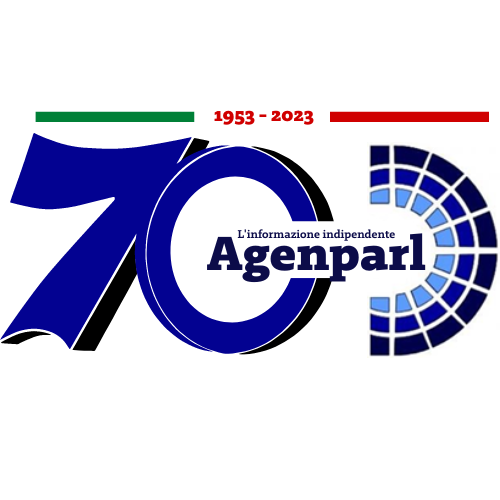 (AGENPARL) - Roma, 21 Novembre 2025
(AGENPARL) - Roma, 21 Novembre 2025(AGENPARL) – Fri 21 November 2025 A weekly compendium of media reports on science and technology achievements
at Lawrence Livermore National Laboratory. Though the Laboratory reviews
items for overall accuracy, the reporting organizations are responsible for
the content in the links below.
LLNL Report, Nov. 21, 2025
El Capitan retained its ranking as the world’s fastest supercomputer.
(Photo: Garry McLeod)
El Cap on top
https://top500.org/news/el-capitan-retains-1-as-jupiter-becomes-europes-first-exascale-system-in-the-66th-top500-list/
The 66th edition of the TOP500 list of the world’s most powerful
supercomputers was announced at the SC25 Conference in St Louis, Missouri.
The new list reflects continued U.S. leadership in high-performance computing
(HPC), historic European milestones and growing global diversity across
architectures and energy-efficient design.
The El Capitan system at Lawrence Livermore National Laboratory (LLNL)
remains the undisputed leader of global HPC. Based on the HPE Cray EX255a
architecture, powered by AMD 4th Gen EPYC™ CPUs and AMD Instinct™ MI300A
accelerators, El Capitan achieved 1.809 Exaflop/s on the HPL benchmark — a
significant remeasurement that further strengthens its position as the
fastest computer in the world. El Capitan also dominates the HPCG benchmark,
delivering 17.41 HPCG-Petaflop/s, making it the #1 for real-world application
performance. On the HPL-MxP mixed-precision benchmark, it recorded 16.7
Exaflop/s, confirming its versatility in AI and data-driven workloads. With
11.34 million cores and an energy efficiency of 60.9 GFlops/Watt, El Capitan
exemplifies the current generation of exascale computing.
Read More
https://top500.org/news/el-capitan-retains-1-as-jupiter-becomes-europes-first-exascale-system-in-the-66th-top500-list/
Demonstrations of a new corrective manufacturing technique. (Credit: Howard
et al.)
The undo button for 3D printing
https://knowridge.com/2025/11/the-undo-button-for-3d-printing-has-arrived-and-its-pure-sci-fi-come-true/
Traditional 3D printing works in only one direction: you add material layer
by layer, and once something is printed, it stays that way. If a part is
wrong or incomplete, the entire object usually ends up discarded.
But scientists at Lawrence Livermore National Laboratory (LLNL) have created
a new resin that changes the rules. This material allows a 3D printer not
only to build objects, but also to un-build them — letting users erase
mistakes, reshape parts and recycle printed material.
The new work introduces a hybrid additive and subtractive manufacturing
system. The magic lies in a specially designed resin that reacts differently
depending on the color of light it is exposed to. When the material is hit
with blue light, it hardens and becomes a solid structure. When exposed to
ultraviolet light, it breaks down and returns to liquid form. This means a
printer can build an object and later modify or even “undo” specific
areas with the right wavelength of light.
Read More
https://knowridge.com/2025/11/the-undo-button-for-3d-printing-has-arrived-and-its-pure-sci-fi-come-true/
Michael R. Anastasio was awarded Livermore’s 2025 John S. Foster Medal.
Recognizing Michael Anastasio
Lawrence Livermore National Laboratory (LLNL) Director Kim Budil announced
that Michael R. Anastasio is the recipient of the 2025 John S. Foster Jr.
Medal. Anastasio is the only person to have served as director of both
Lawrence Livermore and Los Alamos national laboratories.
The honor cites Anastasio’s four-decade role in U.S. stockpile stewardship,
work carried out without underground nuclear explosive testing since 1992,
and his advocacy of the Quantification of Margins and Uncertainties (QMU)
framework. QMU is widely used across the nuclear security enterprise to
evaluate warhead performance under uncertainty.
Established in 2015 and administered by Lawrence Livermore National Security,
the Foster Medal is awarded annually by the LLNL director; recipients receive
a citation, a gold medal and a $25,000 cash award. Anastasio is the 10th
honoree, following Franklin Miller (2024) and Adm. Richard W. Mies (2023).
Anastasio previously led LLNL (2002–2006) and LANL (2006–2011).
Read More
Apollo 17 astronaut Harrison Schmitt collects lunar samples with an
adjustable sampling scoop during the 1972 moon mission. (Photo courtesy of
NASA)
Rewriting lunar history
https://www.space.com/astronomy/moon/a-tiny-apollo-17-moon-rock-is-unlocking-a-secret-lunar-history
An unassuming rock collected from the surface of the moon over 50 years ago
by the Apollo 17 astronauts Gene Cernan and Harrison Schmitt could completely
alter what we thought we knew about the early days of the moon and, by
extension, the solar system.
The rock sample, catalogued simply as 76535, has a chemistry and texture that
indicates it formed deep down in the moon’s crust, nearly 31 miles (50
kilometers) underground. Moreover, radioisotope dating places it as having
been on the lunar surface for 4.25 billion years.
Liberating rocks so deep takes the most enormous of impacts. The assumption
had been that the impact that gouged out the South Pole–Aitken Basin, which
is the largest impact site on the moon, had dug out rock 76535, especially
since their ages approximately match.
However, new simulations, led by Evan Bjonnes of Lawrence Livermore National
Laboratory, show that rock 76535 probably formed beneath the ground where it
was found at Apollo 17’s landing site.
Read More
https://www.space.com/astronomy/moon/a-tiny-apollo-17-moon-rock-is-unlocking-a-secret-lunar-history
Some 30 autonomous drones flying at LLNL. The Lab is testing swarm controls
and sensor payloads used in a variety of national security applications.
(Photo: James Reimer)
Swarm science
https://www.eetimes.com/swarming-drones-scaling-the-future-of-warfare/
Military planners are no longer talking about a handful of large, expensive
drones. The conversation now centers on swarms — dozens or even hundreds of
small, inexpensive drones working together.
In the U.S., Lawrence Livermore National Laboratory (LLNL) is at the
forefront of this research. The lab received FAA approval in 2024 to operate
up to 100 autonomous drones for two years, enabling large-scale experiments
in collaborative autonomy.
According to Brian Wihl, Associate Program Leader for autonomous sensors at
LLNL, that certificate was groundbreaking. Most drone research in the U.S. is
carried out through simulations. And when physical equipment is used, it’s
limited to smaller numbers of aircraft in restricted test zones. LLNL could,
for the first time, explore questions of scale and coordination in
near-operational settings.
“It’s not just about the science — it’s about getting systems that
exist in the real world,” Wihl told EE Times.
Read More
https://www.eetimes.com/swarming-drones-scaling-the-future-of-warfare/
——————————————————————————
Founded in 1952, Lawrence Livermore National Laboratory https://www.llnl.gov
provides solutions to our nation’s most important national security
challenges through innovative science, engineering and technology. Lawrence
Livermore National Laboratory is managed by Lawrence Livermore National
Security, LLC for the U.S. Department of Energy’s National Nuclear Security
Administration.
Read previous Lab Report articles online https://www.llnl.gov/news/lab-report
Unsubscribe from this newsletter
